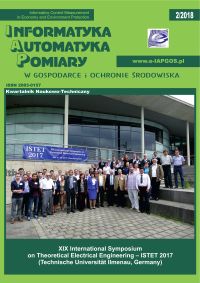Bacher P., Madsen H., Nielsen H.A., Perers B.: Short-term heat load forecasting for single family houses. Energy and Buildings 38/2006, 63–71.
Bacher P., Madsen H., Nielsen H.A.: Online short-term solar power forecasting. Solar Energy 83/2009, 1772–1783.
Cemesova A. et al.: PassivBIM: Enhancing interoperability between BIM and low energy design software. Automation in Construction 57/2015, 17–32.
Fabrizio E. et al.: A model to design and optimize multi-energy systems in buildings at the design concept stage. Renewable Energy 35/2010, 644–655.
Fan Ch. et al.: Temporal knowledge discovery in big BAS data for building energy management. Energy and Buildings 109/2015, 75–89.
Feist V.: Die Hauptlagen nach der Projektierung der passiven Häuser. Konti Print, Moscow 2015.
Halvgaard R. et al.: Model predictive control for a smart solar tank based on weather and consumption forecasts. Energy Procedia 30/2012, 270–278.
Michailidis I.T. et al.: Proactive control for solar energy exploitation: A german high-inertia building case study. Applied Energy 155/2015, 409–420.
Oti A.H. et al.: A framework for the utilization of Building Management System data in building information models for building design and operation. Automation in Construction 72/2016, 195–210.
Sultanguzin I., Kalyakin I., Govorin A., et.al.: Optimization of the energy efficient active house. 3 Ingenieurtag 2016. Neseff-Netzwerktreffen 2016. Tagungsband. Branden-burgische Technische Universität. Cottbus-Senftenberg. 14-15 November 2016, 8–12.
Sultanguzin I.A., Isaev M.V., Kurzanov S.Yu.: Optimizing the production of coke, coal chemicals, and steel on the basis of environmental and energy criteria. Metallurgist 54/2011, 600–607.
Toepfer H., Goetze M., Chervakova E., Hutschenreuther T.: On the Use of Wireless Sensors Within a Traffic Monitoring System. Proceedings of the International Academic Forum AMO–SPITSE–NESEFF. Smolensk Publishing “Universum”, Moscow–Smolensk 2016.
Torunski E. et al.: A review of smart environments for energy savings. Procedia Computer Science 10/2012, 205–214.
Wang Y., Kuckelkorn J., Liu Y.: State of art review on methodologies for control strategies in low energy buildings in the period from 2006 to 2016. Energy & Buildings 147/2017, 27–40.
Zhou K. et al.: Big data driven smart energy management: From big data to big insights. Renewable and Sustainable Energy Reviews 56/2016, 215–225.







